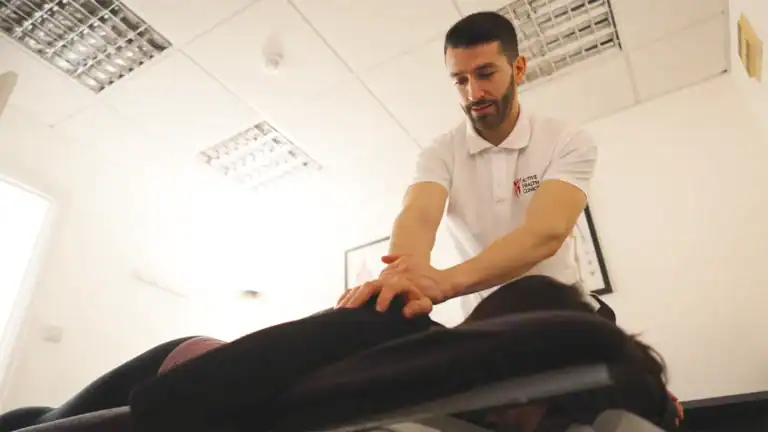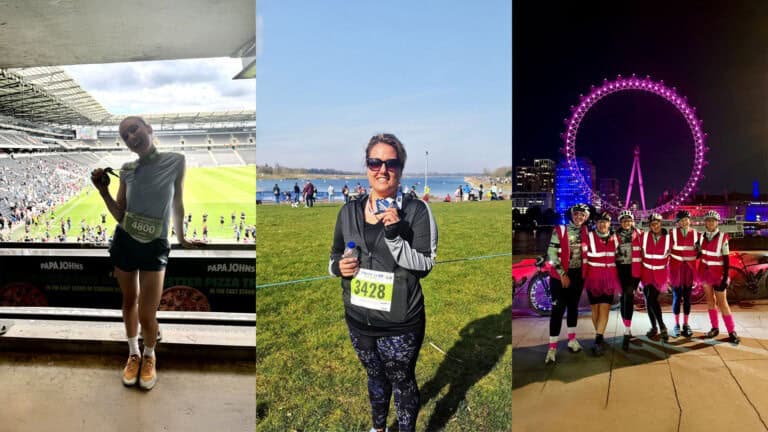This is a very common question that we hear in clinic. It can be tricky knowing if the injury needs ice or heat and it depends a lot on the mechanism of the injury. In this article we will go through common injuries and whether ice, heat or a combination of them both is best option to provide relief.
Sprain vs Strain
Sprain

Imagine you’ve accidentally fallen off the curb and rolled your ankle. Or you’ve awkwardly bent your wrist back. Or you’ve twisted your knee kicking a football and it’s caused an instant pain with the joint becoming more swollen over time. These are most likely sprains. It is a common acute (new) injury that is the result of a ligament being stretched too far or tearing slightly. Ligaments connect bones to other bones, so when the joint is pushed outside its range these ligaments are stressed.
Common symptoms of a sprain
- Bruising (this is a tell-tale difference between sprain and strain)
- Swelling
- Pain
- Discomfort
- Difficulty moving the affected joint
Strain

A strain is like a sprain, however, strains affect the tendons, and these tendons attach muscles to bones. Imagine you’ve been for a run and your calf is really sore. Or you’ve accidentally slipped and your legs have done the splits causing pain in your hamstring. Or you’ve just finished a round of golf after not playing since last summer and your shoulder is painful. These are most likely strains. It is another type of acute injury that occurs from overexerting a muscle or stretching it past its normal range causing the tendons to become stressed.
Common symptoms of strains
- Pain stiffness
- Muscular spasm
- Difficulty moving the affected area
- Slight weakness
Ice vs Heat Therapy
As a general rule, ice should be used on acute, sudden injuries or a flare up of inflammation of a joint (e.g. gout). Whereas heat should be used for tight or sore muscles or if a muscle goes into spasm (e.g. in the lower back)
Ice

Ice should be used on acute injuries (as above) as soon as possible after they occur. Ice packs help reduce the amount of inflammation, pain, and swelling. Ice therapy should be used within the first 24-72 hours post injury. It should be used for 20 minutes at a time for a minimum of 4 times a day. If you don’t have ice packs at home, a bag of frozen vegetables works just as well, if not better as it moulds around the joint. When applying your ice pack ensure it is covered in a material like a tea towel to avoid frost burn. If the skin is broken, make sure the wound has been cleaned and dressed before applying ice to avoid infection.
Heat

Heat can be used to help relax and soothe sore, tense muscles. Or it can help heal damaged tissue by increasing blood flow to the area. You can also use heat on strains after the 72-hour period. Once the inflammation has gone down it can help with recovery of the damaged muscle fibres, helping improve range of motion. Do not use heat on an acute injury! Especially if there is swelling as heat can do more damage to the area.
Apply heat for 20 minutes. But unlike ice therapy, heat should only be used a maximum of 3 times a day. Heat packs can be bought from the supermarket or pharmacy. However a hot water bottle or even a warm bath are also forms of heat therapy. When applying heat ensure it is not too hot to burn the skin. Wrap the heat pack or hot water bottle in a material. If you’re using a hot bath, be sure to check the temperature with your elbow before stepping in. Don’t use heat on areas of broken skin, where there is poor circulation or poor sensitisation to heat.
Summary
So let’s have a quick recap. If the injury is acute and there is pain and swelling, use ice for 72 hours or until inflammation has gone down. From then use heat if needed. If your lower back has gone into spasm or your muscles feel tight and achy, use heat.
Ice: 20 minutes, for at least 4 times a day.
Heat: 20 minutes, for a maximum of 3 times a day.
If you are concerned about any sprains, strains, aches or pains speak to our team today. We offer a free 15 minute discovery consultation to help you understand what you can do about your problem and the best route forward for you to recover safely and effectively.
You can book a free 15 minute consultation using our online booking system here.


